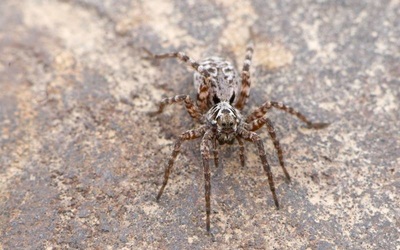|
By guest blogger: Katey Duffey “In that darkness the White Walkers came for the first time. They swept through cities and kingdoms, riding their dead horses, hunting with their packs of pale spiders big as hounds.” ~Old Nan to Bran, A Game of Thrones
There are over 300 species of spiders that live in the Arctic! This region comprises of: Greenland, Alaska, Canada and parts of Europe. The most common species belong to the Erigoninae family, also known as the “Dwarf Spiders”, in which species may average in size between 1-6mm. In other words, most are not much bigger than a pinhead. With only a couple months out of the year where temperatures are warm enough for growth and reproduction, spiders in these harsh environments need a few special adaptations to survive life in the tundra. Depending on a species’ particular behaviors, adaptations may vary. The Arctic wolf spider of the Lycosidae family, for example, which measures in at a whopping 2.5 cm (1in), is among the largest of the spider species in this environment. Its body has glycol, or antifreeze proteins, to prevent from freezing. Running crab spiders, belonging to the Philodromidae family, hide within plants. Some spiders may only allow ice to form outside the cell walls in their body. To escape the cold and strong winds, Arctic spiders will seek out warm pockets under the snow. They also go through a rest period called diapause, in which their growth stops or slows down during winter. Furthermore, because temperatures are so chilly and food is less plentiful, Arctic spiders can take several years to reach maturity, while their more southern cousins, may only take a year or two to mature. Photos source: polartrec.com , jorgenlissner.dk
So while our real world “ice spiders” may not be large enough to ride into battle or have the ability to hunt down human prey, they are no less incredible. In fact, they play a valuable role in maintaining a balance of other invertebrates throughout their ecosystem. Considering that over 2,200 species of insects live in the Arctic, more than any other kinds of animals in the region, these underappreciated arachnids are vital for keeping those insect numbers in check! Arctic spiders may also hold a key to monitoring global warming! As temperatures rise, these spiders will grow faster, and have longer time frames of activity. However, warming temperatures will also invite southern species northward to compete with the Arctic species for resources. That could prove disastrous for the northern species, in that their southern cousins may end up outcompeting them. In the meantime, more research is needed on fully understanding the natural history and behavior of these spiders in order to consider how future environmental changes may affect them. References Animals.pawnation.com Danks, H.V. (2004). Seasonal adaptations in Arctic insects. Integrative and Comparative Biology, 44(2): 85-92. Doi:10.1093/icb/44.2.85. Doyle, A. (2007). Arctic Spiders May Hold Clues to Global Warming . www.reuters.com Duman, J.G. (1979). Subzero temperature tolerance in spiders: the role of thermal hysteresis factors. Journal of Comparative Physiology, 131: 347-352. www.polarcom.gc.ca
1 Comment
Donna Hall
9/30/2021 04:11:02 am
I found this very informative and interesting, I wondered if a spider could live in the snow.we have in the past few years in England UK, seen the invasion of the giant house spider and this last year the false widow any predictions on what we might expect next year? I was thinking ice spiders hence this search, but that seems highly unlikely with the weather?
Reply
Leave a Reply. |
Blog Archive
|



 RSS Feed
RSS Feed
